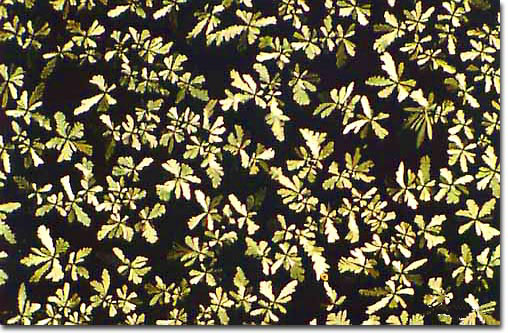|
With the blue compensating filter removed, baking soda, boric acid, and glycine combine to form very tiny, but near-perfect crystals with the golden tinge in this image. Baking soda, a form of sodium bicarbonate, naturally occurs in almost all life forms, but is also derived from mined soda ash or synthesized by the Solvay process. From our refrigerator freshener to our rising cakes and our antacid heartburn relief, baking soda permeates our daily lives. Used in swimming pools, hot tubs, and on an industrial scale, sodium bicarbonate is valued highly for its great buffering capacity. Not only does baking soda squelch the fires in our gut, but also it is highly effective as a fire retardant in extinguishers rated for grease and electrical fires. Boric acid, derived from borax and kernite, finds utility not only in the medicine cabinet as an eye ointment and mild antiseptic, but also in commercial applications as an industrial lubricant, a relatively environmentally-benign insecticide, and for cleaning products. Glycine, the third member of this crystal trio, is a naturally occurring amino acid, but also is manufactured by the food and pharmaceutical industries. Glycine is used by the body as a metabolic building block for nucleic acids, bile acids, porphyrins, creatine phosphate, and other amino acids.
|
